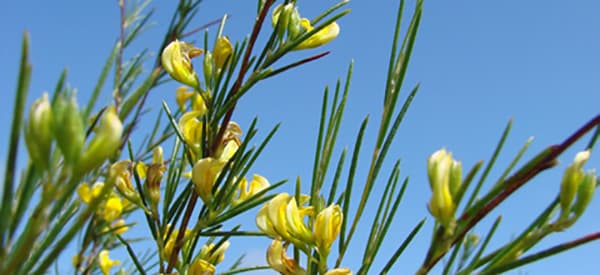
Rooibos
Rooibos (Aspalathus linearis, also known as the red bush) is a popular, caffeine-free alternative to green and black tea. It has a distinctive reddish color. Rooibos tea is the processed leaves of the shrub Aspalathus that only grows in South Africa. Rooibos leaves are green but turn red from the oxidation process that enhances their color. Its tea does not contain caffeine and has a lower level of tannins than other herbal teas. Thus, it is a good beverage option for people sensitive to caffeine.
Rooibos comes in different grades segregated according to their aroma, color, flavor, and length of stalk. Higher leaf contents are darker and with a richer flavor. Superior long-cut grade rooibos blends well with fruit and flowers. Extra fine cuts are used in espressos and some confectioneries. The supercut is the standard grade having a soft taste and more potent active substances.
The use of rooibos started about 300 years ago by the Khoisan people who first consumed the plant as a herbal remedy. The Cape-Dutch settlers began to use it as a cheaper alternative to black tea. From the wild, people cultivated Aspalathus in small-scale farming. After hundreds of studies of its health benefits, rooibos became popular in the early 21st century.
Where Rooibos Is Found
Rooibos is South Africa’s most valuable treasure since the plant only grows in the Cederberg region in the West Cape. There have been several attempts in growing Aspalathus around the world. Unfortunately, all attempts were unsuccessful. It was due to the very specific climate and soil condition that only the West Cape can offer for the shrub’s existence.
⇒ The Complete Map of Edible Plants: Find Out What You Have in Your Area!
How To Identify Rooibos
Rooibos, as a beverage, is distinguishable from other teas through its reddish-brown color. The organic loose-leaf sold in the market are finely chopped reddish-brown leaves. In the wild, the Aspalathus plant has needle-like leaves that make them look almost broom-like.
Leaves. Aspalathus shrub leaves are green and needle-like. They measure about 1 mm thick and 15 to 60 mm long. They do not have stalks but are sessile, attaching directly to the stem. These leaves are clustered densely along the stem. Depending on the variety, some rooibos leaves are simple while others may be trifoliate or divided into three leaflets.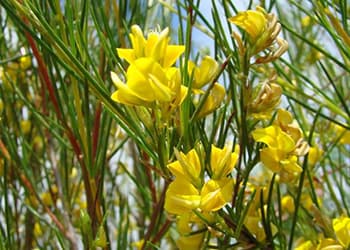
Flowers. In early spring, the bush produces tiny and bright yellow flowers. They are irregular with a pea-like or butterfly appearance. Some are solitary, while other flowers grow in raceme or clusters with short stalks of equal length. These flowers appear densely at the tip of the stem.
Fruits and Seeds. As the flower matures, it produces a legume with a single seed that pops out when the flower is dry. Most species have ovaries with two ovules but only contain one seed in their pod. The seed is hard, tiny, and almost lance-shaped.
Roots. Rooibos plants can resist dry spells because of their long taproots that can reach 3m (118 inches). As a member of the legume family, rooibos roots play a role in nitrogen fixation. It means that it has nodules that provide an oxygen-free space for bacteria to fix nitrogen from the air.
Stem. Rooibos generally grows in shrubs about 6.5ft (2m) tall. But, their forms often vary according to their habitat. In higher elevations, the red bush is prostrate and erect while shrubs occur in areas with lower rainfall.
⇒ Plant Identification Guide – 400 Wild Plants That You Can Forage For
Aspalathus linearis is a member of the Fabaceae family cultivated in the Cederberg region for the production of the herbal beverage rooibos tea. The name came from the Greek word aspalathos, the name of a scented bush in Greece.
Rooibos is a registered trademark name of the product derived from Aspalathus linearis. It has a geographical indicator status (GI) granted in 2014. It means that anything sold with the name rooibos must be made from the plant in Cederberg and its surrounding areas.
Despite its limited cultivation, the African fynbos has an estimated 270 species of Aspalathus. About fifty of these species are located in the Cape Peninsula.
How To Grow Rooibos
If a red bush grows in other places in the world, it cannot legally bear the rooibos name. Some farmers do try to grow it commercially, but the plant would not mostly thrive outside its locality. They only proliferate well in the desert to a semi-desert and Mediterranean climate. Accordingly, the symbiotic relationship of local microorganisms also plays a role in the effective growth of the red bush.
Rooibos propagate either by seeds or vegetative means.
The unique temperature in South Africa is also the most conducive environment for rooibos. It needs a temperature that may be mild and drops to freezing in winter, and reaches 48⁰C in summer.
The following are some tips for growing rooibos outside its locality. However, as the plant is apparently difficult to grow, this may not guarantee successful propagation at all.
Growing Rooibos from Seeds
It is ideal to sow red bush seeds in late spring or summer. Some growers prefer growing them in greenhouses and transplanting them in autumn.
Scarifying the seeds using abrasion and thermal stress will encourage germination. It means cutting through the seed coat to weaken it and allow water and gas to pass. You can do this by physically cutting the seed or soaking them in boiled water overnight.
Sow the seeds in a seed tray with an equal mixture of potting compost and sand or perlite. Plant them about 2/5-inch deep and keep the soil moist but not soggy. Place the tray in a warm spot by the window or a greenhouse.
When the seedlings are large enough to handle, transfer them to individual pots with acidic soil. Acidic soil is a mixture of peat-based compost and sharp sand.
Propagating Rooibos by Cutting
You can propagate the existing red bush plant by taking a semi-woody cutting from a healthy plant in early spring. Plant the cuttings in well-draining soil in a humid and warm spot. Keep the soil moist but not soaking.
Once the plant is established, avoid watering them too often. Rooibos grows better in drought and poor soil conditions.
Plant Care and Maintenance
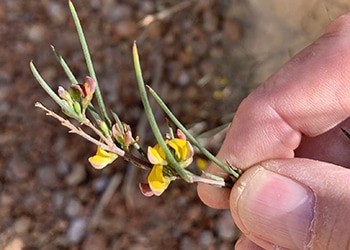
Rooibos is fairly difficult to grow but will proliferate well under the given conditions:
- Desert, Mediterranean, or Subtropical Climate
- Small amount of water
- Dry, acidic, and well-draining soil
- Dry but not arid in winter
- Warm and sunny area
How To Harvest Rooibos
Under a conducive growing environment, rooibos may produce harvest-ready leaves after 18 months. When harvesting it for beverage, growers cut the stem and leaves by hand and bundle them. It is then exposed to oxygen (oxidized) by bruising or cutting the bundles.
Oxidizing develops the rich color and flavor of the plant and brings out the most in its essential oil. The more it is oxidized, the deeper its color, and the sweeter the taste that rooibos produce.
Rooibos is also available in a ‘green’ version where the plant is dried immediately after harvesting. Without the fermentation process, green rooibos has a grassy and mineral-like, and lighter flavor.
Commercial rooibos is then graded according to their leaf-to-stem ratio. Higher grade rooibos has less stem and is more flavorful.
Fresh rooibos leaves keep well on a cool and dry shelf to prevent them from going musty and turning weak. Processed rooibos is more shelf stable and can stay fresh for up to two years.
What Rooibos Is Good For And Natural Remedies Made From It
Rooibos, often labeled as tea, is a popular beverage prized for its nutrient-dense composition. It is valued for its zero-caffeine, zero-calorie, and low-tannin content.
For about three centuries, rooibos is used for its anti-inflammatory effect. It contains quercetin, a highly anti-inflammatory polyphenol and antioxidant. Rooibos is a promising drink for the prevention of atherosclerosis, high cholesterol, high blood pressure, and many other diseases.
Rooibos has a high antioxidant content that boosts the immune system and removes free radicals. It prevents many types of cancer and other debilitating diseases.
Rooibos tea is also a bronchodilator that helps expand the lungs and airways to improve airflow. Thus, it relieves most respiratory illnesses while boosting the oxygen intake for the benefit of the heart.
One of the most popular reasons for taking rooibos tea is the belief that it can help in weight loss management. According to studies, rooibos is anti-obesogenic, although more studies are needed to prove it. But, more findings support the ability of the plant to regulate metabolism and support the overall metabolic health. It increases the secretion of leptin or satiety hormone that regulates food intake.
Rooibos also rose to fame with claims that it can help treat many types of allergies. It was said to help alleviate colic in babies that were enclosed in the book “Allergies: An Amazing Discovery” released in 1970.
The alpha hydroxy acid in rooibos leaf is beneficial for hair and skin health. That is why rooibos is popular among people who want to improve their overall health and wellness, inside and out.
⇒ 40 Interesting Home Reliefs from Our Grandparents That Could Help You
In summary, the potential healing properties of rooibos are:
- Heart health

- Digestive health
- Respiratory health
- Cholesterol problem
- Blood sugar issues
- Cancer prevention
- Weight loss
- Bone health
- Immune support
- Hair and skin health
- Allergy treatment
- Treatment of sleep problem
What Parts Of Rooibos Are Used For Remedy
The health benefits of rooibos are concentrated in its leaves and stem. Since the plant contains low tannins, it does not have a bitter taste, which is preferred by many users.
Rooibos is consumed as an infusion, a fresh brew, or tea. It is often available as a loose-leaf tea in many health and supplement stores.
Refreshingly Tasty Rooibos Latte
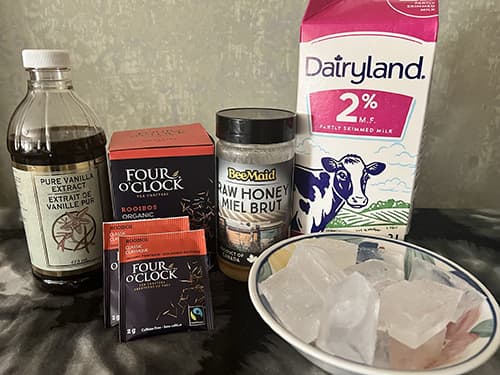
Ingredients
- ¾ cup water
- 2 rooibos tea bags
- ½ tsp vanilla extract
- Honey, to taste
- ¾ cup milk of choice
- Ice
Steps
- Bring the water to a simmer under low heat then add the tea bags and steep for 2-3 minutes.

- Remove from heat and discard the tea bags.

- Add in the rest of the ingredients, stirring until all are completely dissolved. Top the rooibos latte with ice and enjoy the caffeine-free treat.

- You may also use a mason jar, cap it and shake the contents along with ice for better flavor.

How to use this remedy:
Drink it anytime you need a good mood booster and cure for the above-mentioned ailments. However, all herbs may have side effects when taken in excess. So, drink moderately, and avoid taking more than 10 cups a day to avoid potential liver problems.
What Plants Resemble Rooibos
| Features | Rooibos (Aspalathus linearis) | Nevada Ephedra (Ephedra Nevadensis) | Honeybush (Cyclopia genistoides) |
|---|---|---|---|
 | 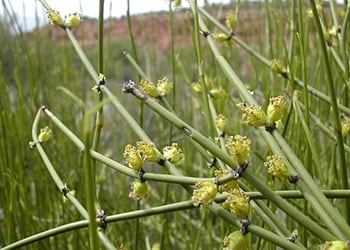 | 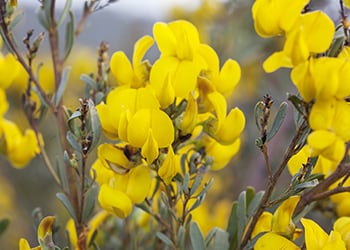 | |
| Size | 6.5 ft | 1 to 1.5 ft | 1.7 ft |
| Leaves | Green; needle-like; linear; sessile; simple/trifoliate | Opposite; narrowly triangular | Short; needle-like |
| Flowers | Bright yellow; butterfly shape; solitary/raceme | Yellow; separate male and female flowers in a plant (dioecious) | Bright yellow; pea-shaped |
| Fruits/Seeds | Lance-shaped; single-seed; hard and tiny seeds | Nut-like seeds in cone structure | Brown seeds in brown pods |
| Stem | Erect; reddish in color; shrub or shrublets | Erect with branchlet; parallel; green | Multi-branched; woody; yellow stem |
| Scent | Sweet-herbal | Strong pine | Sweet and honey-like |
Warnings And Cautions
Rooibos is safe for most people in a controlled amount, but it does not go without side effects. Excessive intake of rooibos tea may cause liver problems and affect male fertility.
Presently, there is no sufficient evidence to prove rooibos tea safety in pregnant and breastfeeding women. Although it is one of the most consumed tea because it is practically caffeine-free, it should be used moderately. To avoid potential adverse side effects, people in this group should limit, if not avoid, taking rooibos tea.
Rooibos may also cause moderate interaction with some medicines. It includes liver medication, high blood pressure medicine, and chemotherapy treatments. If you have hormone-sensitive cancer like breast and ovarian cancers, do not take rooibos tea. It boosts estrogenic activities that may worsen your condition.
Commercially processed herbal teas are often safer to take than fresh herbs. It is packed in a limited amount and often goes through a strict process of extracting toxic compounds in them.
But if you have an underlying health condition, always consult with your physician before taking any herbal teas like rooibos.






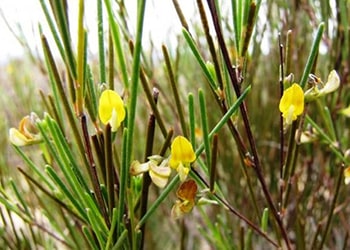
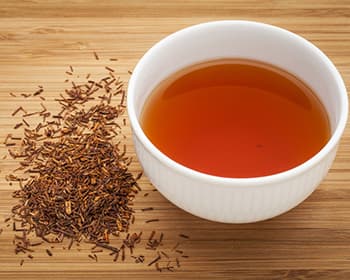
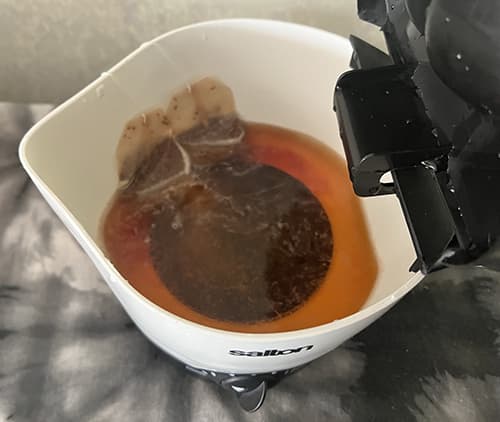
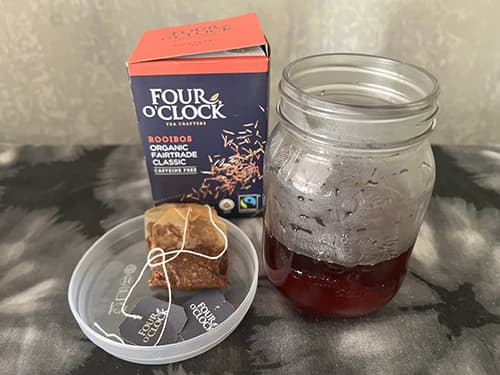
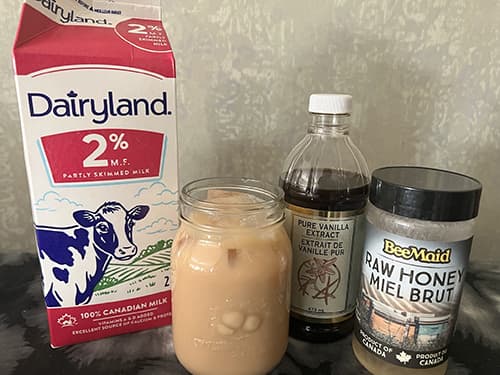
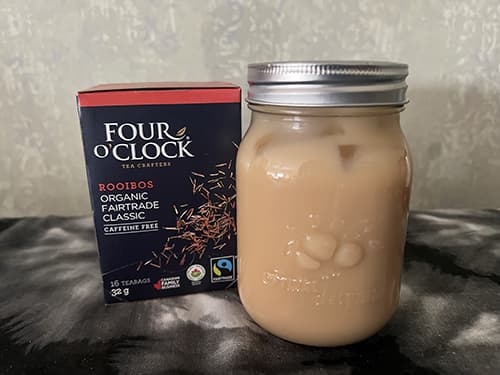
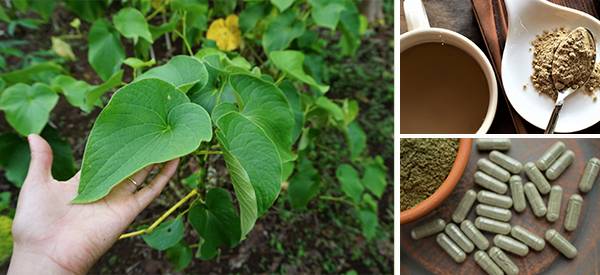
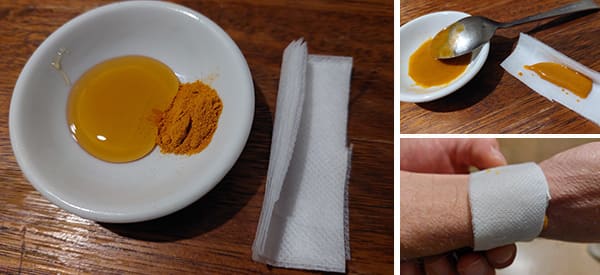
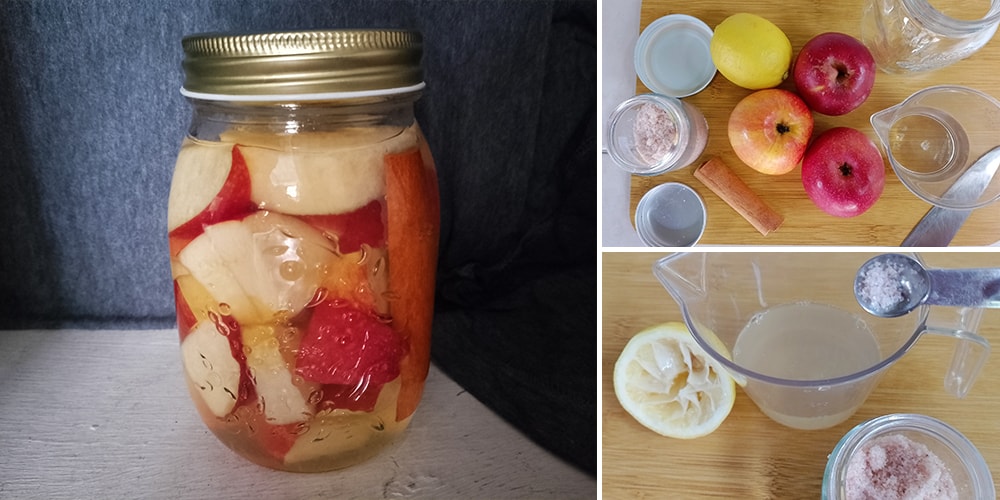
Rooibos has been my favorite tea for many years. In S. Africa they sometimes call it “Red Bsh” tea.
Hi Geri,
Thank you for your comment! We are glad to hear Rooibos is your favorite tea.
Many blessings and good health!
I lived in South Africa for many years and I enjoyed this tea every day
Hi Peg,
Thank you so much for sharing this! We are happy to hear you enjoy Rooibos tea.
Many blessings and good health!
Hi Peggy have artheritis how do I get this herb to help me?
Check out http://www.nicolesapothecary.com. and click on SHOP at the top of website and you will find a joint and arthritis salve that she sells, and also has other premade tinctures for various illnesses that you can buy.
As a South African and having grown up with Rooibos tea, it is 100% safe for pregnant women (irrespective of term of pregnancy) and breastfeeding women and in fact is really healthy for Mom-to-be and baby. It is the most drunk tea amongst pregnant women (I’ve had 2 children) with multiple cups drunk per day. It even helps with morning sickness. We even give it to our babies from as early as 4 months old and sometimes sooner (cooled, no milk and a pinch of sugar or honey); and we have boxes of rooibos especially marketed for babies and toddlers. This includes Rooibos and Honeybush tea. It does not impact male fertility in anyway or cause kidney issues. If it does, it would be in quantities that no person can reasonably consume. Generations of us are raised on Rooibos. I’m 44 and never has there been anyone that has had issues with Rooibos or advisories of such a nature that you list above. It is a staple go-to and is found in almost all households.